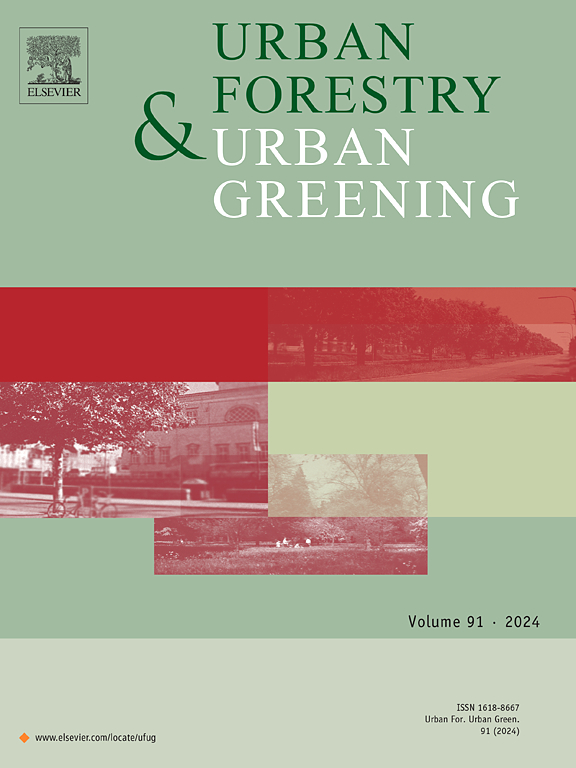Same Greenery, Different Green View Index: Inconsistent Greenery Assessment in Semantic Segmentation and Street View Imagery
IF 6
2区 环境科学与生态学
Q1 ENVIRONMENTAL STUDIES
引用次数: 0
Abstract
Urban greenery is paramount to well-being across physical, psychological, and societal functions. Advances in large street view imagery (SVI) datasets and semantic segmentation models have enabled mapping greenery close to the human experience. However, there are significant inconsistencies in the semantic class combinations (e.g.,相同绿化,不同绿化指数:语义分割和街景图像中不一致绿化评价
城市绿化对于身体、心理和社会功能的健康至关重要。大型街景图像(SVI)数据集和语义分割模型的进步使绘制接近人类经验的绿化成为可能。然而,用于定义绿化的语义类组合(例如,tree, grass, bush)存在显著的不一致性,导致研究之间缺乏标准化和可比性。为了解决这种可变性,我们的研究使用覆盖芬兰赫尔辛基143,899个地点的SVI数据集比较了不同的语义类组合。我们从最近的研究中确定了语义组合,这些研究使用来自ADE20K和cityscape的类来绘制街道绿化。接下来,我们对赫尔辛基的图像数据集进行分割,并为每个语义组合编译绿色值(绿色视图指数,GVI)。最后,通过秩检验、地方Moran’s I、空间回归和土地利用数据,分析了城市和地方GVI差异。我们发现在我们测试的语义组合之间存在显著差异。这导致赫尔辛基的平均GVI值在25.3到40.7之间变化。城市绿地面积差异较大,密度较大的城市绿地面积差异较小。研究结果显示了城市绿化评估的差异,这可以追溯到对绿化的不同定义。我们呼吁在绘制街道级城市绿化地图时进行批判性评估,并增加对细节的关注。研究结果强调了研究之间的潜在不可比性,有助于理解研究人员和利益相关者在绿化暴露和街景图像主题方面的决策的方法学后果。
本文章由计算机程序翻译,如有差异,请以英文原文为准。
求助全文
约1分钟内获得全文
求助全文
来源期刊

Urban Forestry & Urban Greening
FORESTRY-
CiteScore
11.70
自引率
12.50%
发文量
289
审稿时长
70 days
期刊介绍:
Urban Forestry and Urban Greening is a refereed, international journal aimed at presenting high-quality research with urban and peri-urban woody and non-woody vegetation and its use, planning, design, establishment and management as its main topics. Urban Forestry and Urban Greening concentrates on all tree-dominated (as joint together in the urban forest) as well as other green resources in and around urban areas, such as woodlands, public and private urban parks and gardens, urban nature areas, street tree and square plantations, botanical gardens and cemeteries.
The journal welcomes basic and applied research papers, as well as review papers and short communications. Contributions should focus on one or more of the following aspects:
-Form and functions of urban forests and other vegetation, including aspects of urban ecology.
-Policy-making, planning and design related to urban forests and other vegetation.
-Selection and establishment of tree resources and other vegetation for urban environments.
-Management of urban forests and other vegetation.
Original contributions of a high academic standard are invited from a wide range of disciplines and fields, including forestry, biology, horticulture, arboriculture, landscape ecology, pathology, soil science, hydrology, landscape architecture, landscape planning, urban planning and design, economics, sociology, environmental psychology, public health, and education.
 求助内容:
求助内容: 应助结果提醒方式:
应助结果提醒方式:


